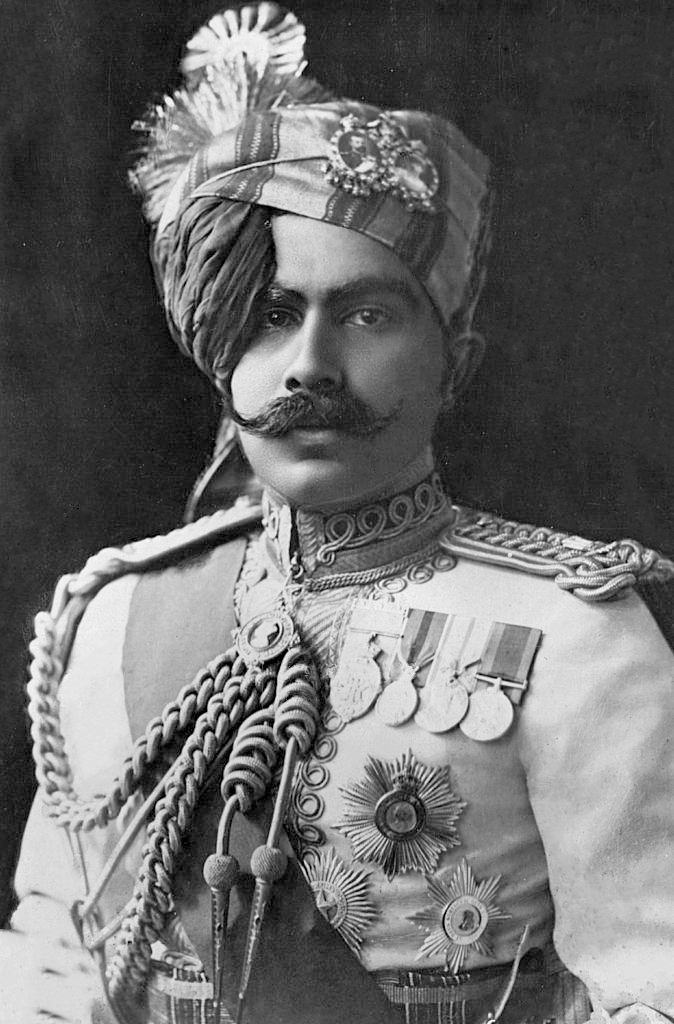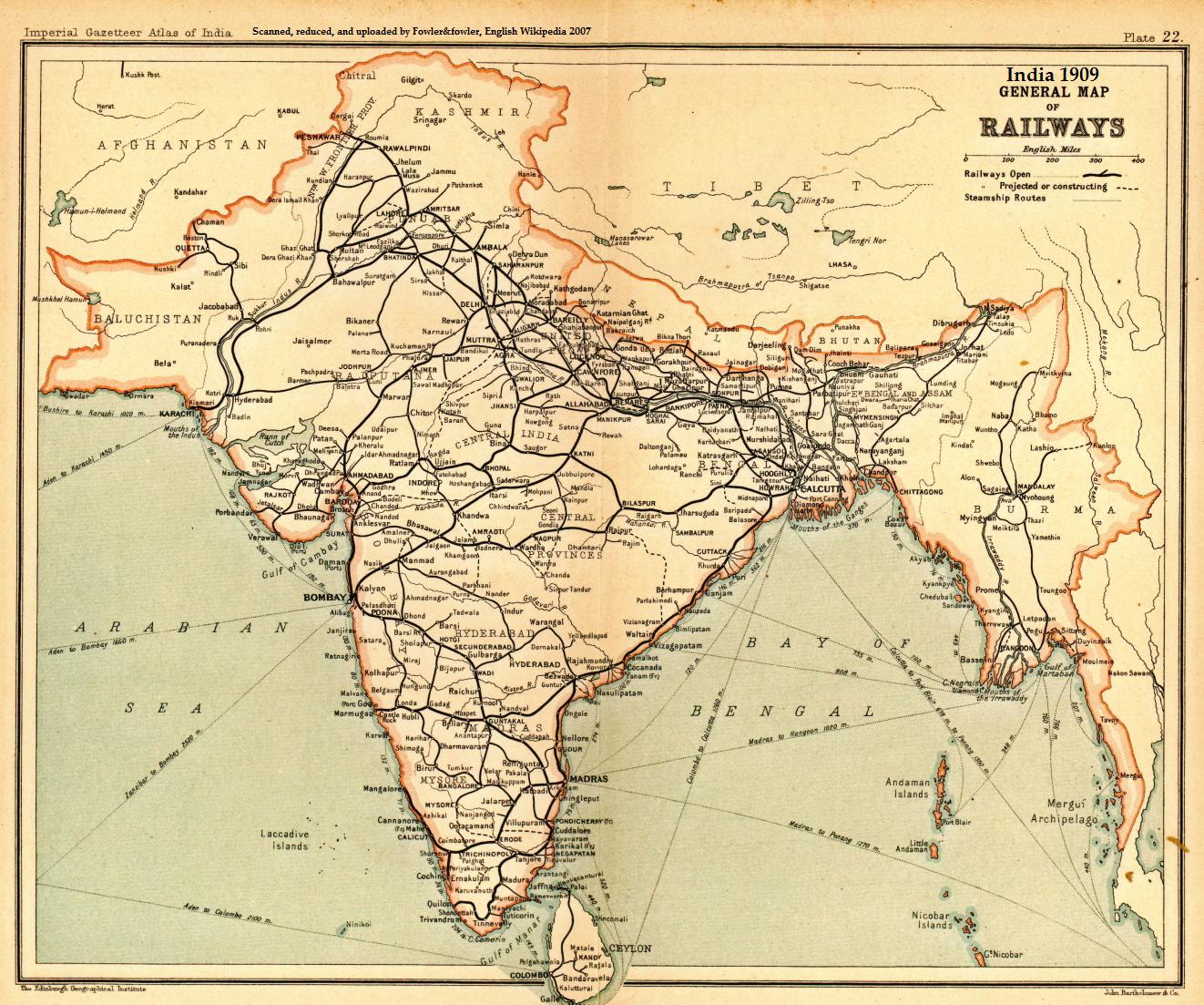|
Bikaner Railway Station
Bikaner railway station is located in Bikaner district in the Indian state of Rajasthan. It serves Bikaner. Bikaner is headquarters of Bikaner railway division. The railway station Bikaner railway station is at an elevation of and was assigned the code – BKN. Bikaner is served by more than 21 pairs of trains each day with multiple daily connections to Delhi, Ahmedabad, Vadodara, Surat, Mumbai and Chandigarh. Within Rajasthan, there are also multiple daily trains available for Jodhpur, Jaipur, Nagaur, Ratangarh, Churu, Barmer, and Jaisalamer. There are also daily trains to Kota. Daily connections to Pathankot, Amritsar, Jammu, Kalka, Haridwar, Agra, Kanpur, Lucknow, Allahabad, Varanasi, Patna, Durgapur, Kolkata, Guwahati and Dibrugarh are also available. Most other major Indian cities such as Ujjain, Pune, Nagpur, Hyderabad, Vijayawada, Chennai, Coimbatore, Mangalore, Kochi, Trivandrum, Goa, Puri, Bubaneswar, Sambalpur, Raipur, Bilaspur and Bhopal are connected via weekly ... [...More Info...] [...Related Items...] OR: [Wikipedia] [Google] [Baidu] |
Indian Railways
Indian Railways (IR) is a statutory body under the ownership of Ministry of Railways, Government of India that operates India's national railway system. It manages the fourth largest national railway system in the world by size, with a total route length of . or 83% of all the broad-gauge routes are electrified with 25 kV 50 Hz AC electric traction . In 2020, Indian Railways carried 808.6 crore (8.086 billion) passengers and in 2022, Railways transported 1418.1 million tonnes of freight. It runs 13,169 passenger trains daily, on both long-distance and suburban routes, covering 7,325 stations across India. Mail or Express trains, the most common types of trains, run at an average speed of . Suburban EMUs run at an average speed of . Ordinary passenger trains (incl. mixed) run at an average speed of . The maximum speed of passenger trains varies, with the Vande Bharat Express running at a peak speed of . In the freight segment, IR runs 8,479 trains daily. The a ... [...More Info...] [...Related Items...] OR: [Wikipedia] [Google] [Baidu] |
Junction Station
''Junction station'' usually refers to a railway station situated on or close to a junction where lines to several destinations diverge. The usual minimum is three incoming lines. At a station with platforms running from left to right, the minimum to qualify as a junction station would usually be one line on the left and two on the right (or vice versa). This is not to be confused with a station where there is one through line, but single track on one side while double track on the other. In this case, all trains passing through the station can reach only one destination as their next station. Commonly, junction stations have multiple platform faces to enable trains for multiple destinations to stand at the station at the same time, but this is not necessary. There are many stations with the word 'junction' in their title, such as those below: In Australia * Bondi Junction railway station *Eagle Junction railway station In Canada *Hervey-Jonction railway station *Sudbury Juncti ... [...More Info...] [...Related Items...] OR: [Wikipedia] [Google] [Baidu] |
Indian Railways Suburban Railway Logo
Indian or Indians may refer to: Peoples South Asia * Indian people, people of Indian nationality, or people who have an Indian ancestor ** Non-resident Indian, a citizen of India who has temporarily emigrated to another country * South Asian ethnic groups, referring to people of the Indian subcontinent, as well as the greater South Asia region prior to the 1947 partition of India * Anglo-Indians, people with mixed Indian and British ancestry, or people of British descent born or living in the Indian subcontinent * East Indians, a Christian community in India Europe * British Indians, British people of Indian origin The Americas * Indo-Canadians, Canadian people of Indian origin * Indian Americans, American people of Indian origin * Indigenous peoples of the Americas, the pre-Columbian inhabitants of the Americas and their descendants ** Plains Indians, the common name for the Native Americans who lived on the Great Plains of North America ** Native Americans in the U ... [...More Info...] [...Related Items...] OR: [Wikipedia] [Google] [Baidu] |
Bikaner
Bikaner () is a city in the northwest of the state of Rajasthan, India. It is located northwest of the state capital, Jaipur. Bikaner city is the administrative headquarters of Bikaner District and Bikaner division. Formerly the capital of the princely state of Bikaner, the city was founded by Rao Bika in 1488 CE and from its small origins it has developed into the fourth largest city in Rajasthan. The Ganges Canal, completed in 1928, and the Indira Gandhi Canal, completed in 1987, facilitated its development. History left, Bikaner coat of arms Prior to the mid 15th century, the region that is now Bikaner was a barren wilderness called Jangladesh. Rao Bika established the city of Bikaner in 1488. He was the first son of Maharaja Rao Jodha of the Rathore clan, the founder of Jodhpur and conquered the largely arid country in the north of Rajasthan. As the first son of Jodha he wanted to have his own kingdom, not inheriting Jodhpur from his father or the title of Maharaja ... [...More Info...] [...Related Items...] OR: [Wikipedia] [Google] [Baidu] |
Rajasthan
Rajasthan (; lit. 'Land of Kings') is a state in northern India. It covers or 10.4 per cent of India's total geographical area. It is the largest Indian state by area and the seventh largest by population. It is on India's northwestern side, where it comprises most of the wide and inhospitable Thar Desert (also known as the Great Indian Desert) and shares a border with the Pakistani provinces of Punjab to the northwest and Sindh to the west, along the Sutlej- Indus River valley. It is bordered by five other Indian states: Punjab to the north; Haryana and Uttar Pradesh to the northeast; Madhya Pradesh to the southeast; and Gujarat to the southwest. Its geographical location is 23.3 to 30.12 North latitude and 69.30 to 78.17 East longitude, with the Tropic of Cancer passing through its southernmost tip. Its major features include the ruins of the Indus Valley civilisation at Kalibangan and Balathal, the Dilwara Temples, a Jain pilgrimage site at Rajasthan's only hill stat ... [...More Info...] [...Related Items...] OR: [Wikipedia] [Google] [Baidu] |
North Western Railway Zone
The North Western Railway (abbreviated NWR) is one of the 19 railway zones in India. It is headquartered at Jaipur,Rajasthan with 59,075+ employees, 658+ stations and a route length of more than 5761 km across at least some parts of four states of Rajasthan, Gujarat, Punjab and Haryana (c. 2009). NWR operates international rail service Thar Express from Jodhpur to Karachi. This zone is the key enabler of the Delhi–Mumbai Industrial Corridor Project by virtue of running railways 1,500 km long Western Dedicated Freight Corridor. History In 1882, a -wide metre-gauge line from Marwar Junction to Pali was built by the Rajputana Railway. It was extended to Luni in 1884 and Jodhpur on 9 March 1885. New Jodhpur Railway was later combined with Bikaner Railway to form Jodhpur–Bikaner Railway in 1889, when the Bikaner Princely State and Jodhpur Princely State started constructing the ''Jodhpur–Bikaner Railway'' within the Rajputana Agency. In 1891, the -wide metre ... [...More Info...] [...Related Items...] OR: [Wikipedia] [Google] [Baidu] |
Jodhpur–Bathinda Line
The Jodhpur–Bathinda line connects , in the Indian state of Rajasthan to in the Punjab, via Dabwali Railway in Haryana. During the British Raj, Bathinda was on the Delhi–Karachi line and after independence and partition of India in 1947, it is on the Delhi–Fazilka line. This line operates under the jurisdiction of North Western Railway. History A -wide metre-gauge line from Marwar Junction to Pali was built by the Rajputana Railway in 1882. It was extended to Luni in 1884 and Jodhpur in 1885. It formed the first Jodhpur Railway. It later became part of Jodhpur–Bikaner Railway. In 1889, the Bikaner Princely State and Jodhpur Princely State started constructing the Jodhpur–Bikaner Railway within the Rajputana Agency. In 1891 the metre gauge Jodhpur – Merta Road sector was opened on 8 April, the Merta Road–Nagaur sector on 16 October, and the Nagaur–Bikaner sector on 9 December. In 1901–02, the metre-gauge line was extended to Bathinda. The Jodhpur–Bikaner l ... [...More Info...] [...Related Items...] OR: [Wikipedia] [Google] [Baidu] |
Bikaner–Rewari Line
The Bikaner–Rewari line or Rewari–Bikaner line is a railway route on the North Western Railway zone of Indian Railways. This route plays an important role in rail transportation of Bikaner division and Jaipur division of Rajasthan state and Gurugram division of Haryana state. The corridor passes through the Desert Area of Rajasthan and Haryana with a stretch of 379 km with consists of two branch lines, the First branch line starts from Loharu Junction and Ends at Sikar Junction with a stretch of 122 km, Whereas the second branch line starts from Ratangarh Junction in Reversal mode and ends at Sardar Shahar with a stretch of 52 km. History The main railway line from to was originally built by Jodhpur–Bikaner Railway company of Bikaner Princely State portion as metre-gauge line during the 19th and 20th century also. This line was opened in different phases during the construction period. * The first phase, from Bikaner Junction to Ratangarh Junction whic ... [...More Info...] [...Related Items...] OR: [Wikipedia] [Google] [Baidu] |
Broad Gauge
A broad-gauge railway is a railway with a track gauge (the distance between the rails) broader than the used by standard-gauge railways. Broad gauge of , commonly known as Russian gauge, is the dominant track gauge in former Soviet Union (CIS states, Baltic states, Georgia and Ukraine), Mongolia and Finland. Broad gauge of , commonly known as Irish Gauge, is the dominant track gauge in Ireland, and the Australian states of Victoria and Adelaide. Broad gauge of , commonly known as Iberian gauge, is the dominant track gauge in Spain and Portugal. Broad gauge of , commonly known as Indian gauge, is the dominant track gauge in India, Pakistan, Bangladesh, Sri Lanka, Argentina, Chile, and on BART (Bay Area Rapid Transit) in the San Francisco Bay Area. This is the widest gauge in common use anywhere in the world. It is possible for trains on both Iberian gauge and Indian gauge to travel on each other's tracks with no modifications in the vast majority of cases. History In Gr ... [...More Info...] [...Related Items...] OR: [Wikipedia] [Google] [Baidu] |
Rajputana Agency
The Rajputana Agency was a political office of the British Indian Empire dealing with a collection of native states in Rajputana (now in Rajasthan, northwestern India), under the political charge of an Agent reporting directly to the Governor-General of India and residing at Mount Abu in the Aravalli Range. The total area of the states falling within the Rajputana Agency was , with eighteen states and two estates or chiefships. Subdivisions and (e)states * Mewar Residency, with headquarters at Udaipur, dealt with the state of Mewar (title Maharana of Udaipur), a salute state entitled to a hereditary gun salute of 19 guns (21 local). * Southern Rajputana States Agency, which was part of Mewar Residency until 1906, when it was separated, covered three salute states: ** Banswara, title Maharawal, hereditary 15 guns ** Dungarpur, title Maharawal, hereditary 15 guns ** Pratapgarh, title Maharawat, hereditary 15 guns * Jaipur Residency, with headquarters at Jaipur, dealt with ... [...More Info...] [...Related Items...] OR: [Wikipedia] [Google] [Baidu] |
Metre-gauge
Metre-gauge railways are narrow-gauge railways with track gauge of or 1 metre. The metre gauge is used in around of tracks around the world. It was used by European colonial powers, such as the French, British and German Empires. In Europe, large metre-gauge networks remain in use in Switzerland, Spain and many European towns with urban trams, but most metre-gauge local railways in France, Germany and Belgium closed down in the mid-20th century, although many still remain. With the revival of urban rail transport, metre-gauge light metros were established in some cities, and in other cities, metre gauge was replaced by standard gauge. The slightly-wider gauge is used in Sofia. Examples of metre-gauge See also * Italian metre gauge * Narrow-gauge railways A narrow-gauge railway (narrow-gauge railroad in the US) is a railway with a track gauge narrower than standard . Most narrow-gauge railways are between and . Since narrow-gauge railways are usually built with ... [...More Info...] [...Related Items...] OR: [Wikipedia] [Google] [Baidu] |





